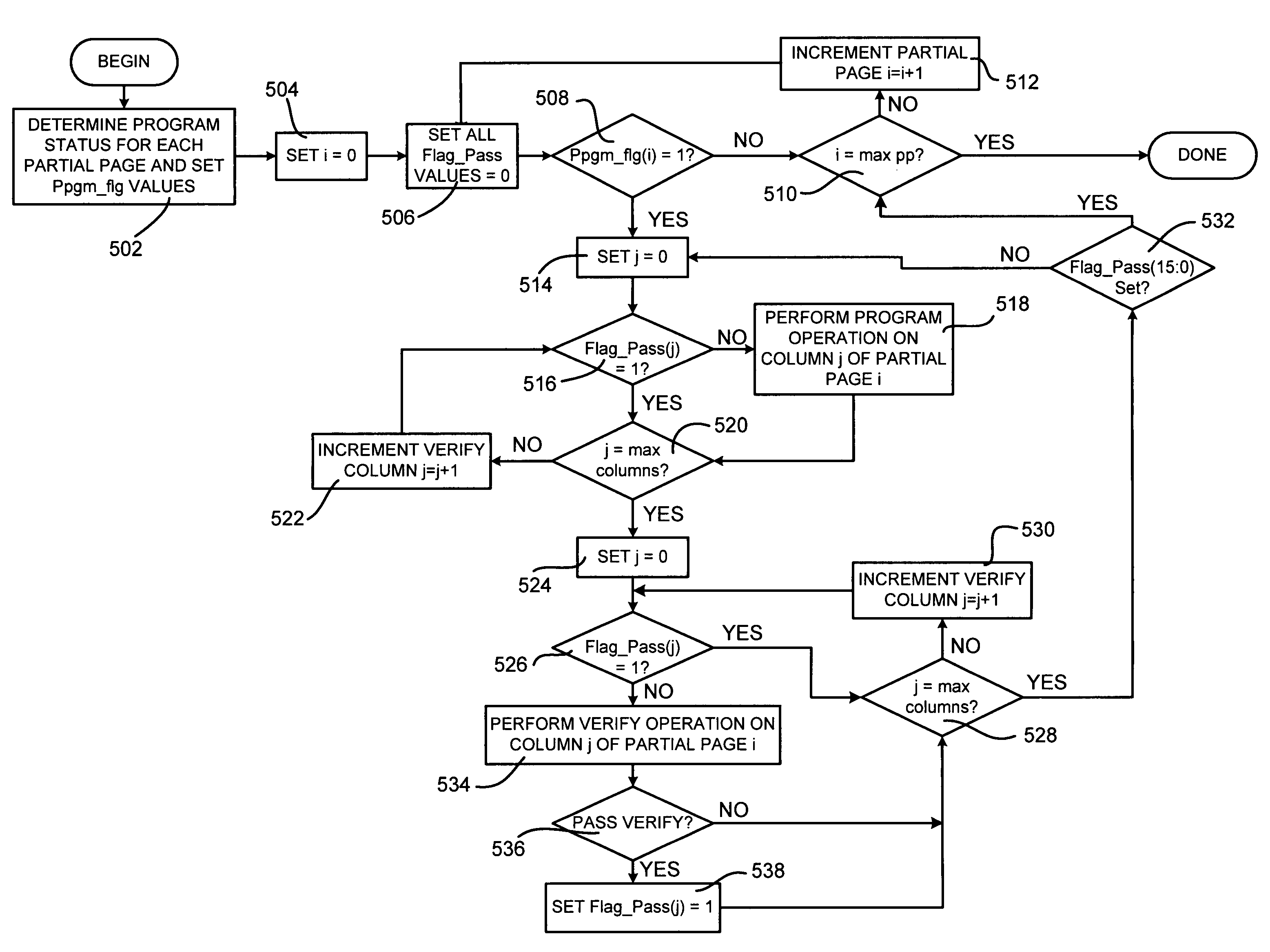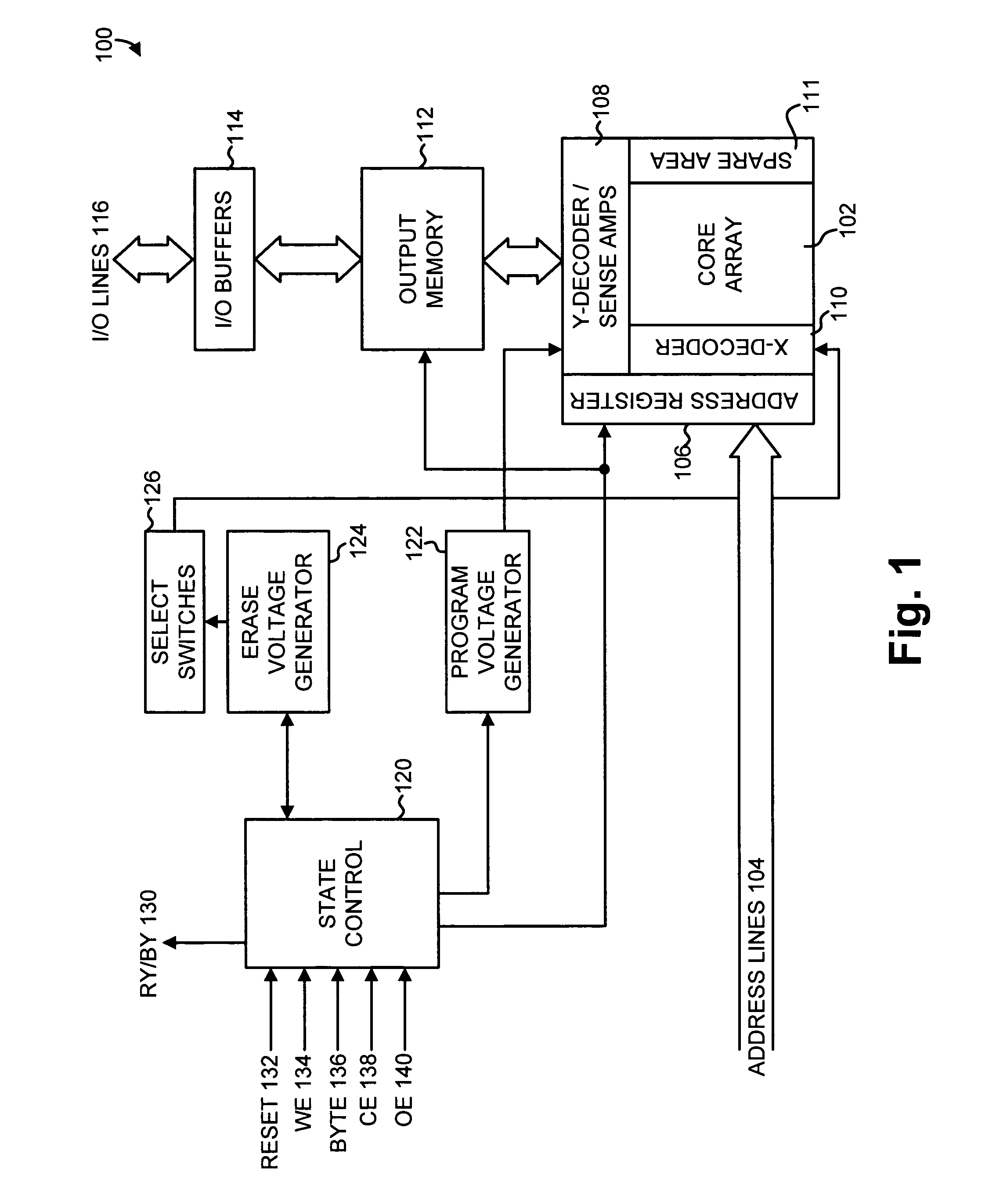Program and program verify operations for flash memory
a technology of flash memory and verification operations, applied in the direction of static storage, digital storage, instruments, etc., can solve the problems of limiting the speed at which cells may be programmed and erased, and limiting the rapid reduction of device siz
- Summary
- Abstract
- Description
- Claims
- Application Information
AI Technical Summary
Benefits of technology
Problems solved by technology
Method used
Image
Examples
Embodiment Construction
[0016]Techniques described below relate to a flash memory writing technique in which memory cells may be programmed and verified as a page or as a partial page. Registers may be implemented to facilitate more rapid programming and verification.
Memory Device Overview
[0017]FIG. 1 is a block diagram illustrating an exemplary high-level implementation of a memory device 100. Memory device 100 may be a Flash memory device implemented as an integrated circuit.
[0018]As shown in FIG. 1, memory device 100 includes a core array 102. Core array 102 may include arrays of high density memory cells, such as, for example, SONOS-type (silicon-oxide-nitride-oxide-silicon) NOR memory cells, where the nitride layer acts as the charge storage element. More specifically, core array 102 may include multiple M×N memory arrays of substantially identical memory cells. As will be discussed in more detail below, core array 102 may be a sequential access memory in which cells' data may be accessed in designate...
PUM
 Login to View More
Login to View More Abstract
Description
Claims
Application Information
 Login to View More
Login to View More - R&D
- Intellectual Property
- Life Sciences
- Materials
- Tech Scout
- Unparalleled Data Quality
- Higher Quality Content
- 60% Fewer Hallucinations
Browse by: Latest US Patents, China's latest patents, Technical Efficacy Thesaurus, Application Domain, Technology Topic, Popular Technical Reports.
© 2025 PatSnap. All rights reserved.Legal|Privacy policy|Modern Slavery Act Transparency Statement|Sitemap|About US| Contact US: help@patsnap.com



